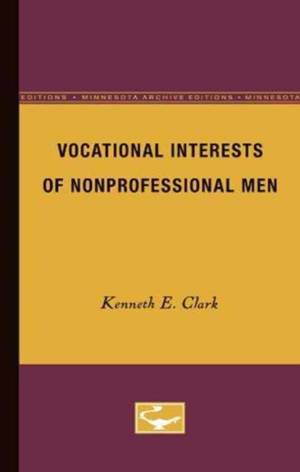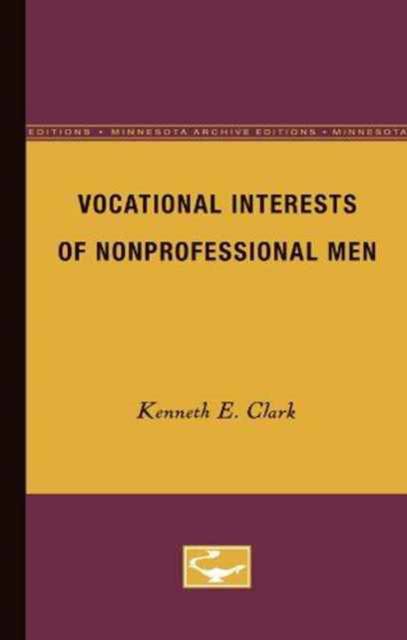
- Afhalen na 1 uur in een winkel met voorraad
- Gratis thuislevering in België vanaf € 30
- Ruim aanbod met 7 miljoen producten
- Afhalen na 1 uur in een winkel met voorraad
- Gratis thuislevering in België vanaf € 30
- Ruim aanbod met 7 miljoen producten
Zoeken
Omschrijving
Vocational Interests of Non-Professional Men was first published in 1961.In contrast to most psychological research about occupational interests and related achievement, which has centered on professional and managerial occupations, the study reported here deals with the vocational interests of skilled trades workers. The study is important because, among young people not planning to go to college, many each year select occupations when they have only fragmentary information about the occupation and its requirements and about their own characteristics and needs; the findings of this study will contribute to better counseling of such young people in the future.Dr. Clark's investigation is based on the responses of approximately 25,000 persons to the Minnesota Vocational Interest Inventory. About 6,000 of the subjects were civilians and the rest were enlisted personnel in the U.S. Navy. He describes the development of the Minnesota Vocational Interest Inventory and of scoring keys for use with it, examines the characteristics of these keys, and summarizes various studies of the psychometric characteristics of keys developed by different methods. He discusses use of keys in classifying individuals into occupational groups, then turns to the use of interest measures in predicting achievement and choice of specialty. In conclusion he suggests ways in which improved interest measures may be developed to the end that there may be not only better counseling of individuals but also greater understanding of the processes by which occupational choices occur.Vocational counselors, industrial psychologists, personnel managers, and psychometrists will find the book especially useful.
Specificaties
Betrokkenen
- Auteur(s):
- Uitgeverij:
Inhoud
- Aantal bladzijden:
- 144
- Taal:
- Engels
Eigenschappen
- Productcode (EAN):
- 9780816668458
- Verschijningsdatum:
- 1/01/1961
- Uitvoering:
- Paperback
- Formaat:
- Trade paperback (VS)
- Afmetingen:
- 149 mm x 229 mm

Alleen bij Standaard Boekhandel
+ 95 punten op je klantenkaart van Standaard Boekhandel
Beoordelingen
We publiceren alleen reviews die voldoen aan de voorwaarden voor reviews. Bekijk onze voorwaarden voor reviews.











